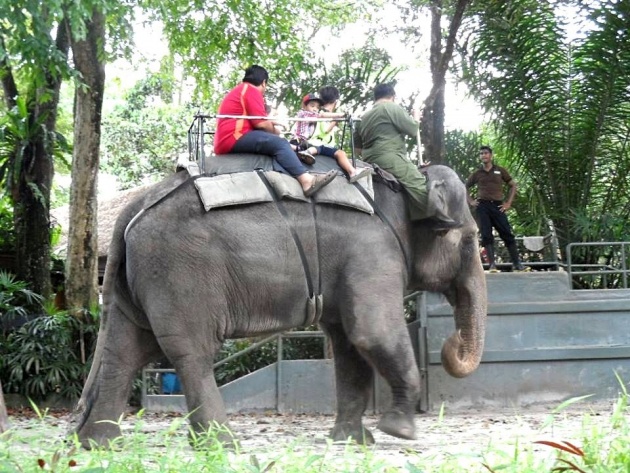"Get ready for a total ecological adventure with over 2,800 animals inhabiting our lush tropical rainforest. Boasting over 40 animal feeding sessions, photo opportunities, shows and rides, the fun never ends at Singapore Zoo"
Source: Singapore Zoo Brochure
Singapore Zoo 2017 / Video Credit: HEL
A walk-through into the wild at one of the highlights in Singapore -- the acclaimed “world’s best rainforest zoo,” the Singapore Zoo. A 28-hectare wildlife park kept in landscape glass-fronted enclosures and secluded barriers where guest can openly walk into the wild and be naturally interactive to some animals.
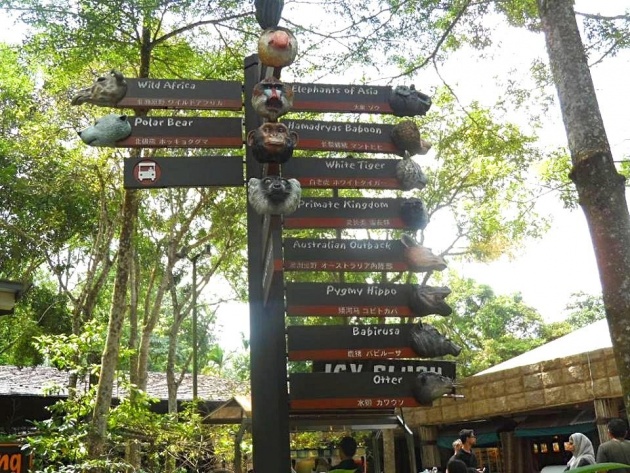
Animal Directional Signs / Photo Credit: Dimpsy
Range over the wonders of wildlife following the trails in the map and animal signage for an awesome and exceptional wildlife experience.
WHERE TO GET TICKETS
Got a one way ticket to the ZOO
Source: Neil Sedaka song wikipedia
Purchase your tickets at the Singapore Zoo ticketing booth. Be early as a bird to avoid ridiculous long queue. Or you can save a few bucks and skip the ticket queue if you purchase your tickets online at the Wildlife Reserves Singapore website and choose the entry that you prefer. Here are the choices for the entry tickets:
For Single Park Entry
A.) Singapore Zoo
Set your map reading skills and start discovering the wildlife habitats in the first zoo in the world to breed a polar – Inuka. Enjoy having breakfast with the Orangutans and be entertained by the different animal shows.
B.) River Safari
Nestled between the two counterparts: Night Safari and Singapore Zoo is where a river themed zoo and an aquarium is located. Explore the first of its kind in Asia, showcasing fresh water attractions and river boat rides as the main highlights of the park.
C.) Night Safari
Enjoy the world’s first nocturnal open air zoo that is set in a humid tropical forest that is obviously opens at night. The animals are separated with natural barriers. The animals in the Night Safari have their performance in the “Creatures of the Night Show”.
D.) Jurong Bird Park
By year 2020 this park will be relocated in 80 Mandai Lake Road, same location where the three parks situated. For the meantime the parks operation is still normal at Jurong and it will cease its operation until the day of its relocation. This is the best place to escape from urban life and spend a relaxing day with nature in the world’s largest bird park in terms of the number of birds.
For Multi-Park Entry Ticket
A.) ParkHopper Plus
This entry is good for four(4) park admission including all the rides: tram rides, boat rides and carousel ride.
B.) 4-Park Admission
Not only you can have access to the four wildlife parks but you can also enjoy a big savings of up to 50%
C.) 2-Park Admission
A 17% discount will be given and 2 admission to two wildlife parks.
Note
The discount for the ticket price is only applicable if you purchase it through the WRS website only.
Once a decision has been made and you got your ticket then you are all set to go to have a walk into the wild. So join me as I walk down memory lane to the day I walked into the wild.
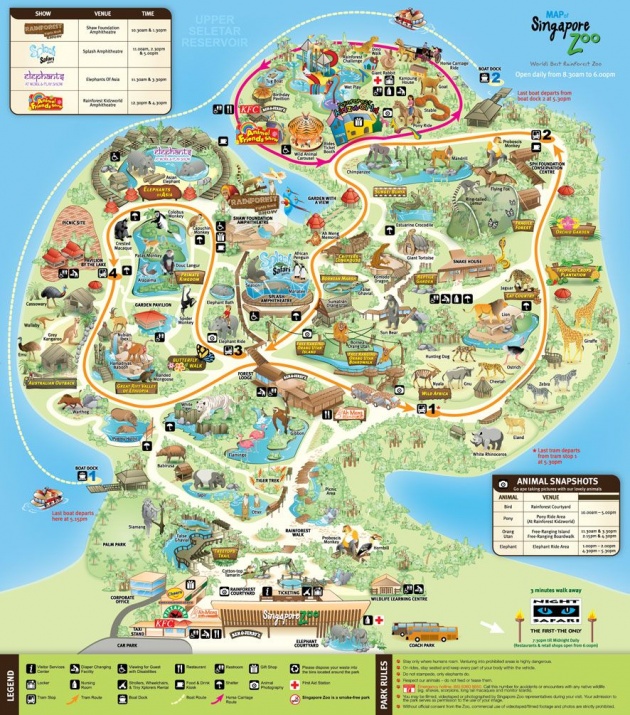
Singapore Zoo Map / Photo Credit: Wypages
Singapore Zoo is categorized into 17 Zones according to habitats. As you set foot at the main entrance, grab a handy map and kick off your way. The first zone that you can see is the treetops trail, the starting point of your wildlife journey. Moving forward you can choose the next zone on your preference, but don’t spend too much time in one zone alone so you can explore the other zones and never forget to take note of the schedules of the animal shows (refer at the upper left corner of the map) and the animal snapshots (lower right corner) too. While waiting for the shows to begin, might as well wander around the vicinity to make use of the time.
SINGAPORE ZOO ZONES
TREETOPS TRAIL
A replica of a rainforest habitat showcasing various animals in the forest. Witness the great and small creatures together in the wild. Have a great encounter with the: Brown Lemur, White-faced Saki Monkey, Greater Mouse-deer, Ring-tailed Lemur, False Gavial, Cotton-top Tamarin and Siamang.
WORD OF CAUTION:
Be aware of the elusive false gavial (Crocodile) that may be lurking beneath the boardwalk because its brown scales will blend in its surrounding.
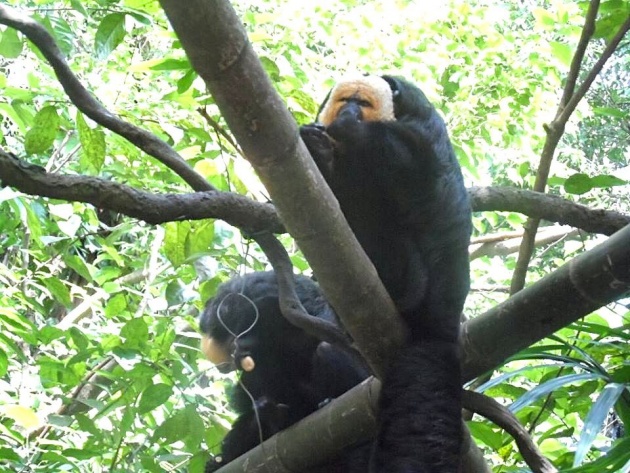
White-faced Saki Monkey / Photo Credit: Dimpsy
A White-faced Saki Monkey that can be found in Brazil, French Guiana, Guyana, Suriname and Venezuela. They can live up to 14 years when in their natural habitat but record shows that they can also live up to 36 years when in captivity. They are active during the day and highly elevated when sleeping for about 15-20m in trees with bushes of leaves to shelter and protect themselves from flying predators and the weather.
GREAT RIFT VALLEY OF ETHIOPIA
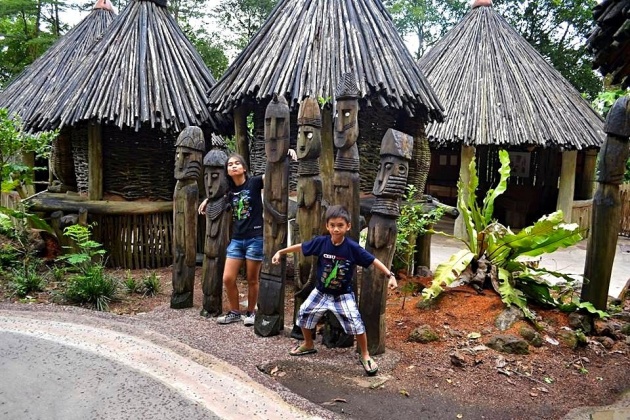
Konso and Amharic Villages / Photo Credit: Dimpsy
Exploring further to the wild, you will see the recreation of life in rustic dwelling huts at Konso and Amharic villages. Wander around the village to meet the Hamadryas Baboons, the agile Nubian ibexes, Banded Mongoose, Black-backed Jackals and Rock Hyraxes.
Do you know:
It takes about 51 months for female Hamadryas baboons to reach sexual maturity and it is between 57 and 81 months for males?
Source: Wikipedia
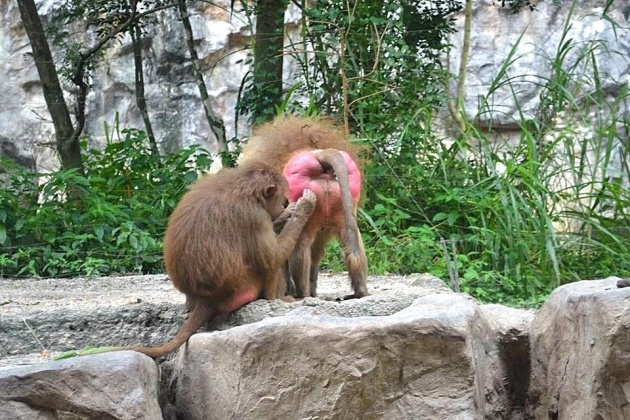
Hamadryas Baboons / Photo Credit: Dimpsy
These mammals are sacred to the ancient Egyptians thus having an alternative name of 'sacred baboon'. Originated to the Horn of Africa and to the southwestern tip of the Arabian Peninsula. Their habitat is in semi-desert areas, rocky areas, and savannas requiring cliffs for sleeping and finding water.
AUSTRALASIA
Hop over to the kangaroo sanctuary which is formerly known as “Australian Zoo”. It was renamed to welcome the newcomers the Goodfellow’s Tree Kangaroos, which are native to Papua new Guinea and join the residents in the exhibit which is the grey kangaroos and agile wallabies for a bigger roo family.
Do you know:
With 755 species it made Australia the only country that has the greatest number of reptiles and the only continent that developed without feline species besides Antartica?
Feline Species are cat species or cat family.
Source: Wikipedia
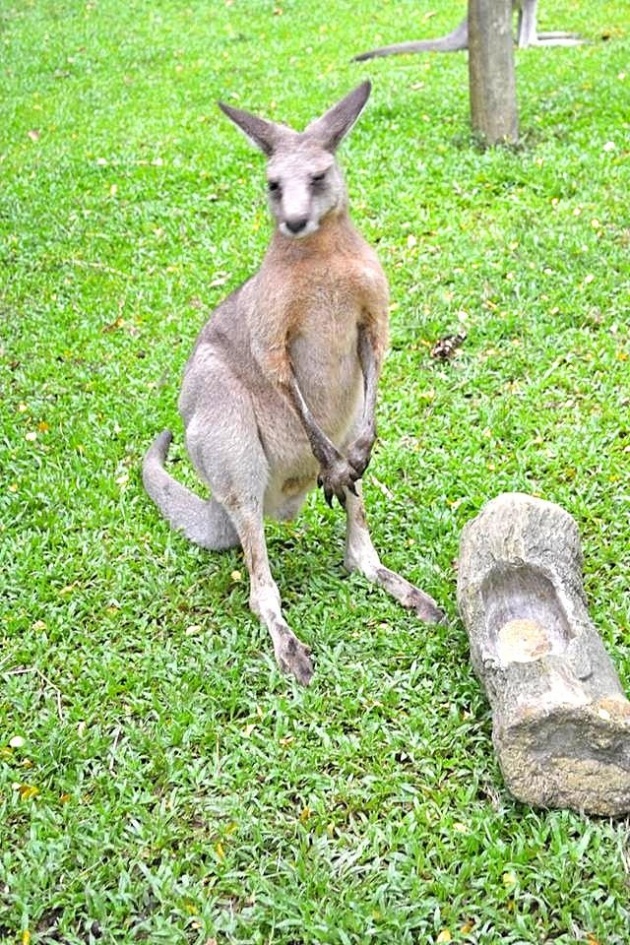
Grey Kangaroo / Photo Credit: Dimpsy
Tagged as the second largest and heaviest living marsupial and native land mammal in Australia that can be found in Southern and Eastern part of the country; better known as Eastern Grey Kangaroo. They can hop up to a speed of 60 kilometres per hour and you can see them licking themselves under the shade on hot days to disperse the heat.
PRIMATE KINGDOM
Animals don’t need to have their own kingdom to be the king of the jungle. It is called as Primate Kingdom because in every primate species, they have their own island with all the visible features of the trees that are considered as castles where these tree-dwellers rule.
Do you know:
that because of the destruction of their habitats and hunting, many of these primate species are protected before it gets extinct?
Source: visualdictionaryonline.com
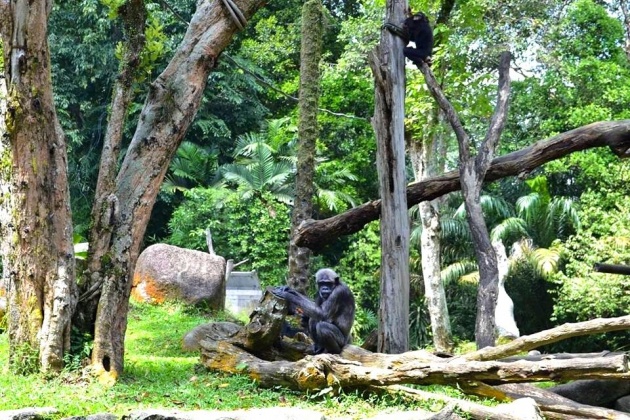
Celebes Crested Macaque / Photo Credit: Dimpsy
An ape-like appearance that is hunted as a pest by locals because of being frugivorous where 70% of its diest consist of fruits while they also consume leaves, buds, seeds, fungus, insects like caterpillars and small lizards or frogs but on occasional basis.
ELEPHANTS OF ASIA
Because of their overall dimensions, these largest living land animal is intrinsic to logging. But their population in the wild was threatened by deforestation and poaching.
The Elephant of Asia Show / Video Credit: Pulat
Elephants of Asia Show is an exhibit that is equipped with a few enhancement devices to challenge the elephants in a physical way and to raise levels of physiological aspect. The exhibit has a distinctive attribute of an architecture adapting a Burmese rainforest that provides unobstructed views of the elephant’s playground.
Do you know:
that Asian elephants weighing 6,000 to 13,000 pounds and a stands 7-10 feet high at the shoulder are smaller compared to their African relatives that has smaller ears and rounded backs?
Source: oregonzoo.org
Asian Elephants / Photo Credit: Dimpsy
Asian Elephants or the Asiatic Elephants has been on the endangered list on the IUCN Red List since 1986 and has a declining population of 50% for the last three generations. Habitat degredation, poaching, fragmentation and loss of habitat are the primary reasons of their loss of existence. The rhythmic swaying behaviour of the elephant may be symptomatic of psychological disorders.
CAT COUNTRY
Lion, Tiger, Jaguar, Leopard, Puma, Cheetah and Caracal are just a few to mention that belongs to the 36 species of the Felidae family. They vary in size from domestic cat to the lion.
Do you know:
that Puma genus is the fourth lagest cats in the cat family?
Source: Wikipedia
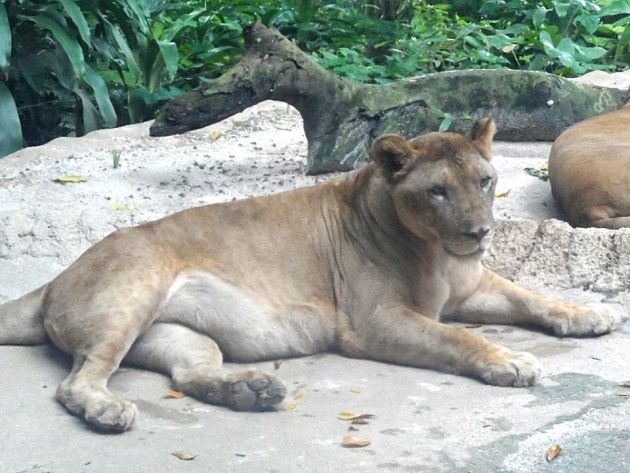
Puma / Photo Credit: Dimpsy
A large and secretive cats that are primarily found in the mountains of North and South America and they are highly adaptive in a large variety of habitats, including forests, tropical jungle, grasslands, and even arid desert regions.
ORANGUTAN ISLAND
An award winning breakfast programme and the only zoo in the world where you can have breakfast up close and personal with the adorable orangutans. Hang-out with these arboreal creatures as they swing, lounge and play right above you in the world’s first free ranging Orangutan habitat.
Do you know:
that the word orangutan means man of the forest?
Source: orangutan-world.com
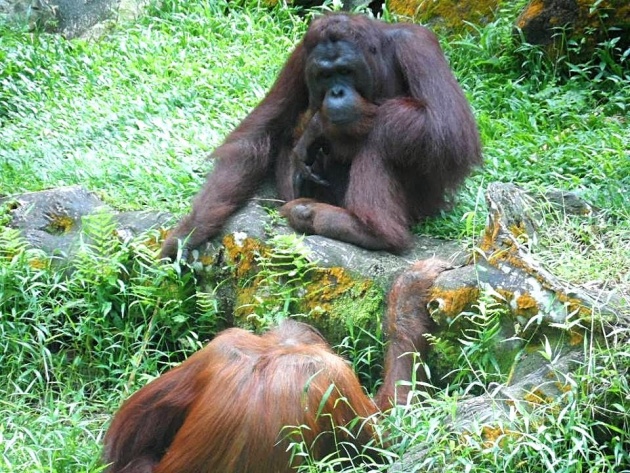
Sumatran Orangutan (Black) and Bornean Orangutan (Orange) Photo Credit: Dimpsy
A critically endangered species and is a native in the island of Bornea where Bornean Orangutan originated together with Sumatran and Tapanuli Orangutans. They are highly intelligent just like other great apes and the third-heaviest living primate after the two species of gorilla.
Do you know:
that the heaviest known male orangutan in captivity was an obese male named "Andy", who weighed 204 kg (450 lb) in 1959 when he was 13 years old?
Source: Wikipedia
There are still ten (10) zones left to tackle but due to unlimited attachment of images I will continue my walk in the wild adventure on my next blog. But for now I will park my fingers and hit the sack.
Thank you for reading.
This is Dimpsy and this blog is written for bitlanders.
The zoo is full of wonders for me to wander.
Single Wanderess

